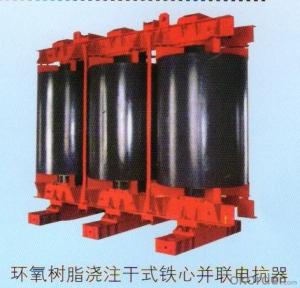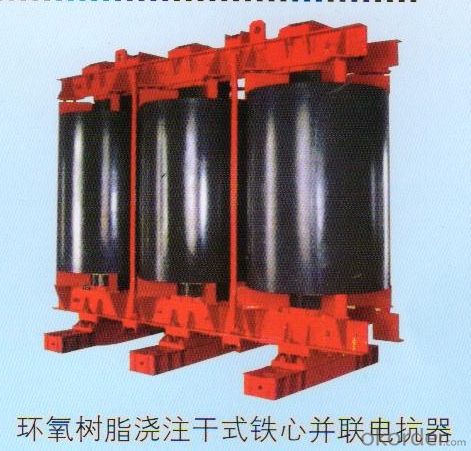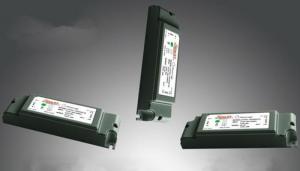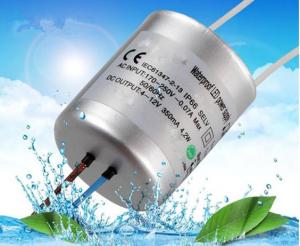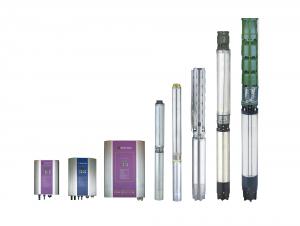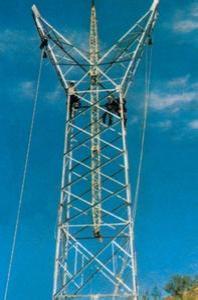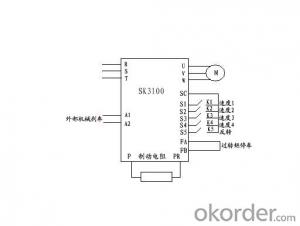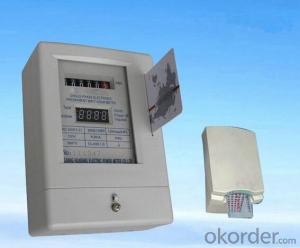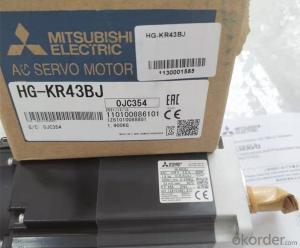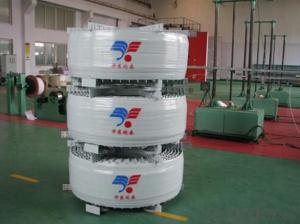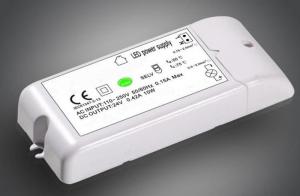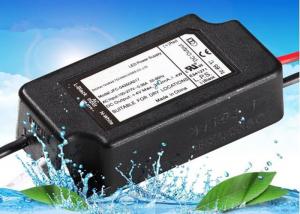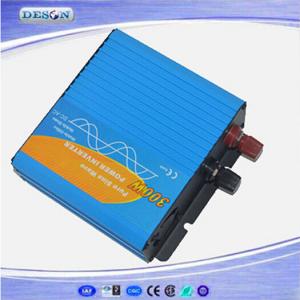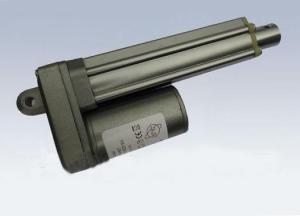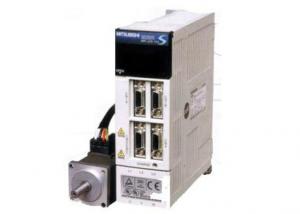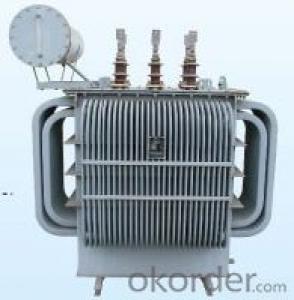Epoxy Cast Resin Dry-type Iron Core Shunt Reactor
- Loading Port:
- China Main Port
- Payment Terms:
- TT OR LC
- Min Order Qty:
- -
- Supply Capability:
- -
OKorder Service Pledge
OKorder Financial Service
You Might Also Like
Epoxy Cast Resin Dry-type IronCore Shunt Reactor
1. Usage
n To reduce power frequency voltage rise caused by capacitance effect of long distance distribution when no-load or light load;
n To improve voltage distribution alongthe line and reactive power distribution in the light-load line, reduce linelosses and improve power factor;
n To reduce secondaryarc current, accelerate secondary arc extinguishing, and improve success rateof line automatic reclosing;
n To be beneficial for eliminatinggenerator self-excitation;
n To reduce equipment capacity andsave investment.
2. Product Characteristics
l The coilsare covered by glass fiber and vacuum casted by epoxy resin,it has good mechanical performance, high reliability ,high safety andlong working life.
l It has good moisture resistance andcan be operated in high humidity environment.
l Low noise, the core is casted as awhole by epoxy resin and form as a solid body, when it is running only cause littlevibration.
l Thin insulation structure, and theair flue is embedded inside to strengthen the heat dispersion, and the short-circuit overload is strong.
l Flame retardant, explosion proof,no environment pollution.
l Low-loss, significant energysaving, and free maintenance
l Small in size, light in weight, niceappearance
3. Voltage grade:6KV~35KV
4. Using Condition
l Normal serviceconditions
Installation:Indoor
Altitude: ≤1000m
Ambient temperature:-5℃~+40℃
Maximum dailytemperature difference:≤25℃
l Special conditions: can be made customized.
5. Model coding
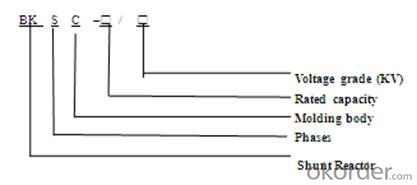
Connection:

6. Parameters
10kV grade
insulation level: I 75/AC35KV;Insulation heat endurance class:F (triangletype)
No. | Type | Rated capacity kVar | Rated voltage kV | Rated Current A | Rated reactance Ω | Noise dB (A) | Outline dimension mm | Weight kg | |||||
H | L1 | L2 | L3 | L4 | Φ d1 | ||||||||
1 | BKSC-600/10 | 600 | 10 | 166.7 | 166.7 | 66 | 1150 | 820 | 700 | 610 | 760 | 18 | 2000 |
2 | BKSC-800/10 | 800 | 10 | 46.2 | 125 | 68 | 1280 | 1040 | 850 | 740 | 890 | 18 | 2400 |
3 | BKSC-1000/10 | 1000 | 10 | 57.7 | 100 | 70 | 1500 | 1200 | 1100 | 960 | 1120 | 18 | 2900 |
4 | BKSC-1500/10 | 1500 | 10 | 86.6 | 66.67 | 70 | 1600 | 1310 | 1200 | 1050 | 1200 | 18 | 3800 |
5 | BKSC-2000/10 | 2000 | 10 | 115.5 | 50 | 70 | 1780 | 1420 | 1300 | 1130 | 1300 | 18 | 4850 |
6 | BKSC-3000/10 | 3000 | 10 | 173.2 | 33.3 | 70 | 1800 | 1580 | 1450 | 1260 | 1460 | 18 | 6200 |
7 | BKSC-4000/10 | 4000 | 10 | 231 | 25 | 71 | 1880 | 1650 | 1520 | 1320 | 1520 | 18 | 8500 |
8 | BKSC-5000/10 | 5000 | 10 | 289 | 20 | 71 | 1980 | 1800 | 1600 | 1390 | 1610 | 18 | 9100 |
9 | BKSC-6000/10 | 6000 | 10 | 346.4 | 16.7 | 74 | 2100 | 1850 | 1700 | 1480 | 1710 | 18 | 10700 |
10 | BKSC-8000/10 | 8000 | 10 | 461.8 | 12.5 | 75 | 2300 | 2000 | 1850 | 1610 | 1860 | 24 | 13200 |
11 | BKSC-10000/10 | 10000 | 10 | 577.3 | 10 | 76 | 2400 | 2160 | 2000 | 1740 | 2000 | 24 | 16400 |
12 | BKSC-16000/10 | 16000 | 10 | 923.7 | 6.3 | 77 | 2500 | 2210 | 2050 | 1780 | 2080 | 30 | 24000 |
Note:
1) Special product could be available basedon customers' requirement.
2) Reference data only, not for technical specifications.
3) Noise in above forms is sound power level.
35KV grade;insulation level: LI170/AC70KV or LI200/AC85KV;insulation heat endurance class:F (triangletype)
No. | MODEL | Rated capacity kvar | Rated voltage kv | Rated Current A | Rated reactance Ω | Noise dB (A) | Dimensions | Weight (kg) | |||||
H | L1 | L2 | L3 | L4 | Φ d1 | ||||||||
1 | BKSC-3000/35 | 3000 | 35 | 49.5 | 408 | 71 | 1800 | 1800 | 1700 | 1480 | 1610 | 18 | 7800 |
2 | BKSC-4000/35 | 4000 | 35 | 66 | 306 | 71 | 1950 | 1900 | 1800 | 1590 | 1700 | 18 | 9200 |
3 | BKSC-5000/35 | 5000 | 35 | 82.5 | 245 | 72 | 2250 | 2200 | 2080 | 1810 | 1950 | 18 | 10500 |
4 | BKSC-6000/35 | 6000 | 35 | 99 | 204 | 75 | 2600 | 2600 | 2450 | 2130 | 2280 | 18 | 12100 |
5 | BKSC-8000/35 | 8000 | 35 | 132 | 153 | 76 | 2800 | 2800 | 2640 | 2300 | 2450 | 24 | 15000 |
6 | BKSC-10000/35 | 10000 | 35 | 165 | 122.5 | 77 | 3000 | 3000 | 2840 | 1460 | 2620 | 24 | 17800 |
7 | BKSC-12000/35 | 12000 | 35 | 198 | 102 | 77 | 3150 | 3150 | 3000 | 2600 | 2780 | 30 | 20500 |
Note:
1) Special product could be available basedon customers' requirement.
2) Reference data only, not for technical specifications.
3) Noise in above forms is sound power level.
7. Triangle type dimension figure:
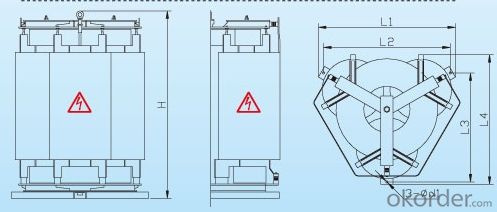
10KV grade;insulationlevel: I 75/AC35KV; insulation heat endurance class:F (linetype)
No. | Type | Rated capacity kVar | Rated voltage kV | Rated Current A | Dimensions mm | Weight kg | |||||
H | L1 | L | B | B1 | Φ d1 | ||||||
1 | BKSC-600/10 | 600 | 10 | 166.7 | 1280 | 480 | 1570 | 1200 | 1270 | 18 | 2400 |
2 | BKSC-800/10 | 800 | 10 | 46.2 | 1400 | 550 | 1780 | 1280 | 1350 | 18 | 2800 |
3 | BKSC-1000/10 | 1000 | 10 | 57.7 | 1600 | 550 | 1900 | 1280 | 1350 | 18 | 3300 |
4 | BKSC-1500/10 | 1500 | 10 | 86.6 | 1750 | 660 | 2150 | 1100 | 1150 | 18 | 4200 |
5 | BKSC-2000/10 | 2000 | 10 | 115.5 | 1880 | 750 | 2300 | 1200 | 1250 | 18 | 5350 |
6 | BKSC-3000/10 | 3000 | 10 | 173.2 | 2150 | 750 | 2450 | 1200 | 1250 | 18 | 6700 |
7 | BKSC-4000/10 | 4000 | 10 | 231 | 2270 | 820 | 2580 | 1250 | 1300 | 18 | 9000 |
8 | BKSC-5000/10 | 5000 | 10 | 289 | 2380 | 820 | 2680 | 1250 | 1300 | 18 | 9600 |
9 | BKSC-6000/10 | 6000 | 10 | 346.4 | 2500 | 900 | 2850 | 1300 | 1350 | 18 | 11200 |
10 | BKSC-8000/10 | 8000 | 10 | 461.8 | 2620 | 950 | 3000 | 1300 | 1350 | 24 | 13600 |
11 | BKSC-10000/10 | 10000 | 10 | 577.3 | 2860 | 1070 | 3300 | 1350 | 1400 | 24 | 16800 |
12 | BKSC-16000/10 | 16000 | 10 | 923.7 | 3200 | 1150 | 3650 | 1350 | 1400 | 30 | 24800 |
Note:
1) Special product could be available basedon customers' requirement.
2) Reference data only, not for technical specifications.
3) Noise in above forms is sound power level.
35KV grade;insulation level: LI170/AC70KV or LI200/AC85KV;insulation heat endurance class:F (linetype)
No. | MODEL | Rated capacity kvar | Rated voltage kv | Rated Current A | Rated reactanceΩ | Noise dB (A) | Dimensions | Weight (kg) | |||||
H | L1 | L | B | B1 | Φ d1 | ||||||||
1 | BKSC-3000/35 | 3000 | 35 | 49.5 | 408 | 71 | 2200 | 1000 | 3100 | 1100 | 1200 | 18 | 9000 |
2 | BKSC-4000/35 | 4000 | 35 | 66 | 306 | 71 | 2380 | 1050 | 3250 | 1100 | 1200 | 18 | 10500 |
3 | BKSC-5000/35 | 5000 | 35 | 82.5 | 245 | 72 | 2630 | 1100 | 3400 | 1200 | 1300 | 18 | 12100 |
4 | BKSC-6000/35 | 6000 | 35 | 99 | 204 | 75 | 2800 | 1150 | 3550 | 1200 | 1300 | 18 | 13800 |
5 | BKSC-8000/35 | 8000 | 35 | 132 | 153 | 76 | 3020 | 1220 | 3750 | 1320 | 1470 | 24 | 16400 |
6 | BKSC-10000/35 | 10000 | 35 | 165 | 122.5 | 77 | 3200 | 1250 | 3820 | 1320 | 1470 | 24 | 19300 |
7 | BKSC-12000/35 | 12000 | 35 | 198 | 102 | 77 | 3380 | 1300 | 4000 | 1400 | 1550 | 30 | 22000 |
Note:
1) Special product could be available basedon customers' requirement.
2) Reference data only, not for technical specifications.
3) Noise in above forms is sound power level.
8. Line type dimension figure:
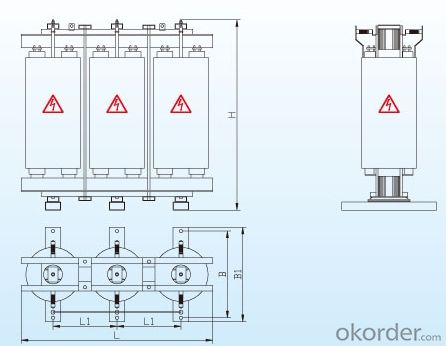
9. Basic data for ordering
l Rated capacity;
l Rated voltage;
l Highest working voltage;
l Rated current;
l Rated frequency;
l Other performance data should beindicated in the contract.
- Q: if my electrical equipment has a fuse; does that not mean it's protected?is it just the power grid that goes down?
- it induces overloads that defeat the ability of the equipment to deal with excess voltage. heat is generated, and things burn up , or melt. the 1859 solar flare actually shorted out heavy copper telegraph cables.
- Q: I have been doing some research in which stocks i would like to invest in. Well i found this company called Raser Technologies. Supposedly they are a geothermal electrical power plant company. With Obama's environmental laws that he is passing, will this cause this stock to increase? i dont know a whole lot about stocks or about this company but if they step up as a major alternative energy companies then they should bring in a lot of profit seeing as their stocks are now only at2.27 a share. any information about this company or predictions for the future of other alternative energy companies would be greatly appreciated. I really think that with all the searching of alternative energy sources, this would be a great investment for the future when these companies step up.
- Get and browse their prospectus first. Then overview AT LEAST the beyond two or three years valued at of annual reviews and examine earlier 12 months projections to how they did in years to come. Are they doing what they are saying they are going to do in years to come? How good have they weathered the recession? Is leadership conservative or dicy? Are there any pending regulation fits that would have an impact on their percentage fee (up or down)? Educate your self earlier than you make investments. NEVER take a scorching tip in a public discussion board. EVER. As normally as no longer it is a pump and sell off rip-off and for those who get stuck up in it you are prone to both lose your blouse or uncover your self at the horrifying finish of an SEC research, relying upon the way you time your buys and sells.
- Q: I opened up my mouse, and im currently using it without the top, because the left click on the mouse is only working about 1 in every 50 or so clicks with the shell on it.Is there a way I can make the click work again with the shell on or do I simply have to buy a new mouse?
- Hi The 'click' is a microswitch tripping. Sometimes the plastic wears down just enough so the switch won't trip. Put a small piece of electrical tape on the back side of the mouse button and try it. Good luck!
- Q: 1.What is Rated AC voltage? Why we would like to state Rated instead of Nominal?2.What is Nominal AC voltage?3.Explain rms value for AC voltage. What is it's relation to Rated/Nominal Voltage?
- Rated AC voltage might be the nominal voltage at which a piece of electrical equipment is designed to operate. In the case of a light, heater or motor, the operation at the rated voltage would provide the rated performance. Most equipment can operate at 5 or 10% above or below the rated voltage without much change in performance. Rated voltage could also be the maximum voltage that a type of wire, plug, socket or circuit breaker is designed for. In that case, the rated voltage may be considerably higher than the nominal voltage. Nominal voltage is the standard value that is used when referring to a voltage level. If the nominal voltage is 220 volts, the actual voltage might be 5 or 10% higher or lower. The RMS value of an AC voltage is the effective value. It is the value that is usually stated when refering to an AC voltage. RMS stands for root mean square. RMS is calculated by calculating the square root of the average of the instantanious voltages making up one cycle of the waveform. It can be calculated or measured for any waveform including square waveforms and distorted sine waveforms. For an undistorted sine wave, the RMS voltage is the peak voltage divided by the square root of 2. Nominal and rated AC voltages are usually RMS values.
- Q: electrical engineering
- use a non contact heat detector. fluke and many others make units that can sense the IR radiation at the terminal and determine the temperature from it.
- Q: i have problem with my home electrical wiring. the negative and ground pin is live with current even when the power is switched off and when switched on all the three pins are live and most of my electrical equipments are not working. please help?
- Wow. It sounds as though you have lost your neutral and have what is called multiwire circuits in your house. Basically what is happening is you have 120 Volts on both the hot and the neutral/ground of your house. If you most of your equipment isn't working, you really have an issue you need to get looked at. Obviously I'm not standing in your house with a volt meter in my hand so I'm taking your word that the neutral and ground have volts, not current, on them. But if what you say is true then this is the most likely scenario. I strongly recommend you get a professional there quickly.
- Q: Curiosity just got the best of me. To be electrocuted one should make a complete circuit, right? What if you just touch the live wire and nothing else, you're not standing on anything, no ground. you're in mid air. Any thoughts? Thanks
- Basically correct. Power line technicians can work on live power lines via helicopter in this manner. And that's how all the birds sit on power lines. Although not touching a wire is not enough. At higher voltages, you'll get arcing if you just get close enough to another source. So a small bird can sit on a power line with no problem. But if it's not designed well, a larger bird with extended wings can get electrocuted even without touching the lines at all.
- Q: how we can design the power rating of any electrical equipment. as per my understanding only way is is to change the resistance of coil( winding if motor, filament if lamp).if it is correct then the equipment will be burn if resistance is low for low power rating. Eg. resistance of filament of 10 w lamp is lower than the resistance of 100 w. generally life of 10 w lamp is higher than 100 w. but in electrical point of view the life of high value of resistance equipment will be higher than the low value value of resistance. means, 10w bulb will glow longer time comparatively 100 w bulb. since 10 w bulb has high resistance , so this bulb's life should be higher than 100w bulb. can anyone explain how to design the power rating of any electrical equipment in line of other electrical parameters.
- Most equipment involves loadings on all the materials used and these materials have various load-carrying limitations. Design essentially balances these against each other whereby the materials' limitations often interact on the design. For existing design variation much empirical data and experience data will be available which will accelerate the design process but for a competely new design, the process may be iterative and toward the end may even need several prototypes to be built and tested. You can't merely change the resistance of a winding in a motor and get a higher rating. Things like core flux density and temperature-rise of insulation (affected by cooling, whatever type that may be) must all be checked. Lamp filament resistance is indeed lower for a higher rating but filament surface area (to get the radiation) and temperature will have to be decided which involves knowing and designing how the lamp radiates light and how it is cooled. The lifetime of a bulb can be quite precisely designed in, largely by the design temperature choice.
- Q: HiCan someone tell me what the difference is betweena) turning my TV (or whatever) off on the setb) turning it off at the switch on the wallc) unplugging itWhat I'm reading seems to suggest that only unplugging it really means its off - is that true?
- When you turn off modern Tvs from the remote, it will go to standby mode, there's still electricity on the circuit enough for the memory to remember your settings, like volume, time, the channel you've last watch before turning it off. When you turn off the switch from the wall or unplugging it, the Tv is now completely disconnected from the power source. You may loose personal settings, and when you plug it back on then it may function in the default settings. Leaving it plugged has advantages but surge, lighting, sudden voltage changes may damage it. So when you'll be out for days then unplug it from the AC outlet to play safe.
- Q: Hi I have the chance to have a small premises at a garden center I would be allowed to advertise and was thinking of having a small studio thereI already have 2 home studio lights interfit background support and 3 backdrops I would be aiming to photography babies and childrendoes any one know what health and safety regulations i have to follow, what insurances is neededI already have equipment cover including my computer public liability and public indemnitydoes all equipment like the lights and backdrop have to be secured?do i have to have a credit card payment machine? basically i want to know every thingAndrea
- You would need the lighting equipment PAT tested (all 'portable' electrical equipment is required to be tested, this means everything that has a plug attached). This need to be done by a qualified electrician. You'd need public liability insurance (I would imagine the Garden Centre would require this of you as part of the lease). Disability access would need to be ensured. In terms of toilets, wash hand basins, I would imagine that the Garden Centre have facilities for public use of these on the premises, you would not need to provide these as you are not providing refreshments - this is in effect a non-food retail/service use. You'd best be advised to do a risk assessment of the procedure so that any risks/hazards are identified and removed/minimised. This should be clearly documented and reviewed regularly. You have a duty of care under the Health Safety at Work Act 1974 to protect the 'health, safety welfare' of members of the public and a RA is a way of showing how you have done that. You would also need to ensure compliance with RIDDOR (Reporting of Injuries, Diseases Dangerous Occurrences Regulations) if anyone is injured on your premises. Have an accident book document any accidents/near misses. When you do you risk assessment you would need to cover things like trip hazards, risk of electrical shock, falling light stands etc etc to ensure that its all covered. I would recommend visiting the Local Council where you live asking to speak to the Environmental Health Office in Health and Safety. They would be the enforcing Authority for Health Safety matters. They can probably give you some advisory leaflets. In terms of payment, a credit card machine would be more secure and convenient. It will cost money from the card issuers though. You don't HAVE to have one, but many people would prefer the convenience of paying that way. IF you handle cash/cheques, there is more of a risk of loss.
Send your message to us
Epoxy Cast Resin Dry-type Iron Core Shunt Reactor
- Loading Port:
- China Main Port
- Payment Terms:
- TT OR LC
- Min Order Qty:
- -
- Supply Capability:
- -
OKorder Service Pledge
OKorder Financial Service
Similar products
Hot products
Hot Searches
Related keywords
